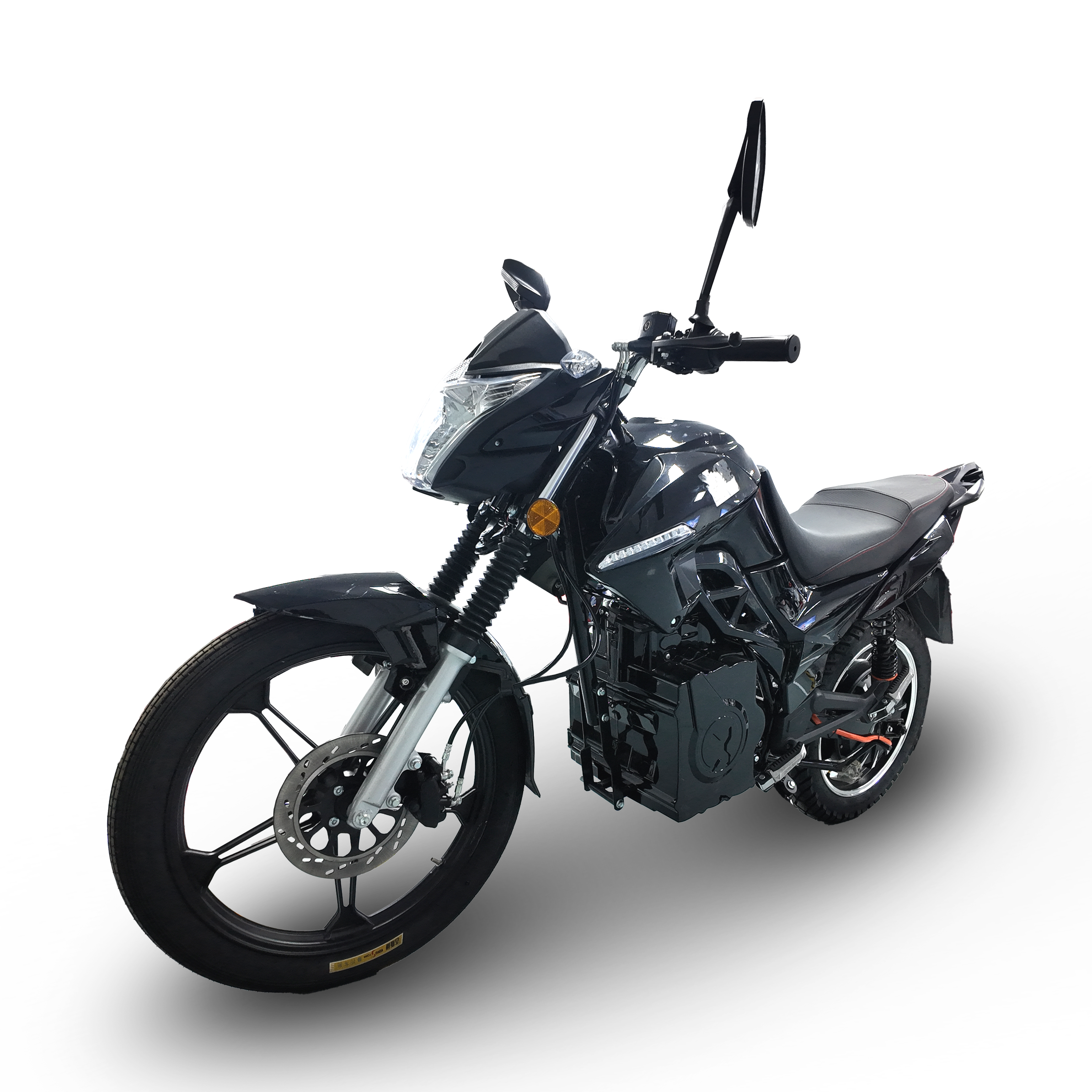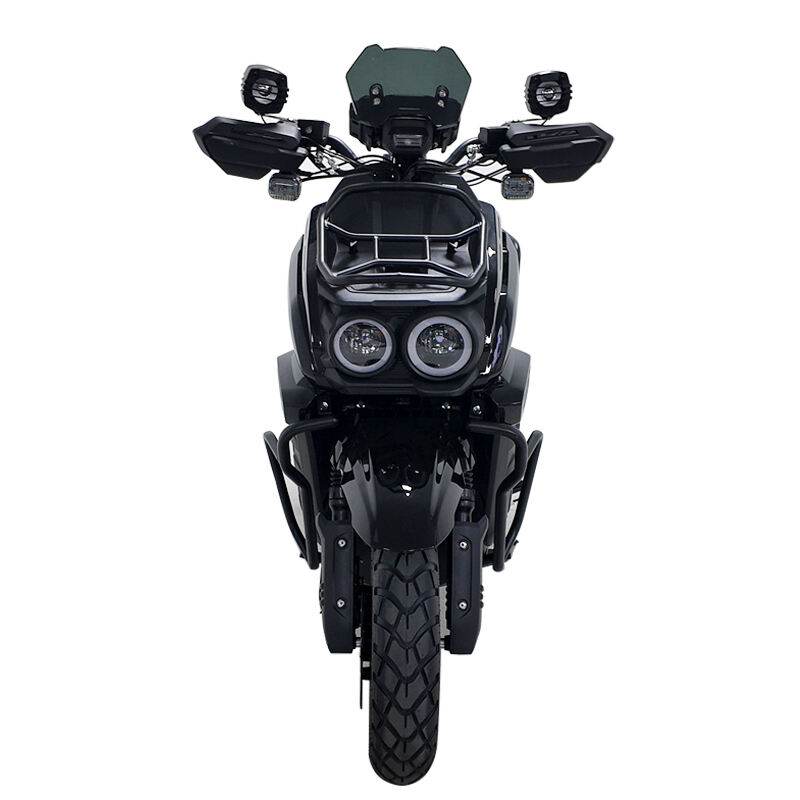La evolución de los vehículos eléctricos de dos ruedas en la industria automotriz de China
El panorama del transporte personal ha experimentado una transformación dramática en los últimos años, con China motocicletas eléctricas emergiendo como una fuerza líder en la movilidad sostenible. Como el mercado más grande del mundo para vehículos eléctricos, China ha sido pionera en tecnologías innovadoras que combinan capacidades de rendimiento impresionantes con estándares notables de eficiencia. La evolución de estos vehículos eléctricos de dos ruedas representa un cambio significativo en la forma en que pensamos sobre el transporte moderno, ofreciendo soluciones que atienden tanto a los usuarios urbanos como a los entusiastas de las motocicletas.
Los fabricantes chinos han invertido fuertemente en investigación y desarrollo, lo que ha dado lugar a motocicletas eléctricas que desafían las percepciones tradicionales sobre limitaciones de rendimiento. Estos vehículos ahora integran sistemas avanzados de baterías, tecnología de frenado regenerativo y sofisticadas soluciones de gestión de energía que maximizan tanto la velocidad como el alcance. La mejora continua en los procesos de fabricación y la calidad de los componentes ha elevado las motocicletas eléctricas chinas hasta competir con marcas internacionales consolidadas.
Capacidades de Rendimiento de las Motocicletas Eléctricas Modernas
Logros en Aceleración y Velocidad Máxima
Los modelos actuales de motocicletas eléctricas de China demuestran capacidades notables de aceleración, con muchas variantes de alto rendimiento capaces de alcanzar los 0-60 mph en menos de 4 segundos. Diseños avanzados de motores y sistemas de entrega de potencia garantizan una aceleración suave y constante a lo largo del rango de velocidades. Algunos modelos premium tienen velocidades máximas superiores a las 120 mph, demostrando que la propulsión eléctrica puede ofrecer un rendimiento emocionante comparable al de los motores de combustión tradicionales.
La integración de múltiples modos de conducción permite a los usuarios personalizar su experiencia, alternando entre configuraciones de alto rendimiento para una aceleración máxima y modos ecológicos para una mayor autonomía. Estos sistemas de control sofisticados optimizan la entrega de potencia según las condiciones de conducción y las preferencias del usuario, asegurando un rendimiento óptimo en diversas situaciones.
Innovación en Autonomía y Carga
Los fabricantes modernos de motocicletas eléctricas de China han logrado avances significativos para abordar la ansiedad por el alcance mediante tecnologías innovadoras de baterías. Muchos modelos actuales ofrecen autonomías reales superiores a las 150 millas con una sola carga en condiciones normales de conducción. Las capacidades de carga rápida también han evolucionado, y algunos modelos pueden alcanzar el 80 % de su capacidad de carga en menos de 45 minutos.
La implementación de sistemas inteligentes de gestión de baterías ayuda a mantener la temperatura óptima de las celdas y patrones eficientes de carga, extendiendo tanto el alcance por carga como la vida útil general de la batería. Estos sistemas avanzados también proporcionan retroalimentación en tiempo real sobre el consumo de energía y el alcance restante, permitiendo a los conductores planificar sus viajes de manera más efectiva.

Integración de Tecnología Avanzada
Funciones de Conectividad Inteligente
Los modelos contemporáneos de motocicletas eléctricas en China incorporan funciones avanzadas de conectividad que mejoran tanto la experiencia de conducción como la eficiencia del vehículo. La integración con smartphones permite a los conductores monitorear el estado de la batería, personalizar ajustes de rendimiento y realizar un seguimiento de las necesidades de mantenimiento de forma remota. Los sistemas de navegación GPS con cálculo de autonomía ayudan a optimizar la planificación de rutas según la capacidad restante de la batería.
Muchos modelos ahora cuentan con capacidades de actualización inalámbrica, lo que permite a los fabricantes mejorar el rendimiento del vehículo y añadir nuevas funciones durante toda la vida útil de la motocicleta. Esta conectividad también posibilita alertas de mantenimiento predictivo y la optimización del rendimiento basada en los patrones y condiciones de conducción.
Sistemas de Seguridad y Asistencia
Las características avanzadas de seguridad se han convertido en un pilar fundamental del diseño moderno de motocicletas eléctricas chinas. Los sistemas de control de tracción, ABS y control de estabilidad ahora son estándar en muchos modelos, garantizando la seguridad del conductor sin comprometer el rendimiento. Algunas variantes premium incluyen control de crucero adaptativo y sistemas de detección de puntos ciegos, incorporando a las motocicletas funciones de seguridad propias de los automóviles.
La integración de sistemas de frenado regenerativo no solo mejora la eficiencia energética, sino que también proporciona una mayor estabilidad al frenar, especialmente en condiciones climáticas adversas. Estos sistemas funcionan en armonía con los mecanismos de frenado tradicionales para ofrecer una potencia de frenado óptima mientras recuperan energía.
Impacto Ambiental y Métricas de Eficiencia
Reducción de la huella de carbono
La adopción de motocicletas eléctricas chinas reduce significativamente las emisiones de carbono relacionadas con el transporte. Cuando se alimentan con fuentes de energía renovable, estos vehículos ofrecen una movilidad verdaderamente libre de emisiones. Los procesos de fabricación también han evolucionado para minimizar el impacto ambiental, y muchos fabricantes han implementado prácticas sostenibles de producción y programas de reciclaje para baterías y componentes.
Estudios indican que la huella de carbono a lo largo del ciclo de vida de las motocicletas eléctricas es sustancialmente menor que la de modelos de combustión comparables, incluso teniendo en cuenta la producción de baterías y la generación de electricidad. Esta ventaja ambiental sigue mejorando a medida que las redes eléctricas transitan hacia fuentes de energía renovable.
Beneficios en Costos de Operación
La eficiencia de las motocicletas eléctricas chinas se traduce directamente en menores costos operativos. El costo de la electricidad por milla es típicamente de un tercio a una cuarta parte del costo de combustible para motocicletas de combustión comparables. Los requisitos de mantenimiento también se reducen, con menos piezas móviles y sin necesidad de cambios de aceite regulares ni de mantenimiento complejo del motor.
El análisis de costos a largo plazo muestra que, a pesar de los precios iniciales más altos, las motocicletas eléctricas suelen alcanzar paridad de costos con las motocicletas tradicionales dentro de tres a cuatro años de uso regular. Esta ventaja económica se vuelve más pronunciada a medida que los costos de las baterías continúan disminuyendo y los precios de la energía fluctúan.
Desarrollos Futuros y Tendencias del Sector
Avance en la Tecnología de Baterías
La investigación sobre tecnologías de baterías de próxima generación promete mejorar aún más las capacidades de las motocicletas eléctricas chinas. Las baterías de estado sólido, actualmente en desarrollo, podrían ofrecer mayor densidad de energía, tiempos de carga más rápidos y una mayor seguridad. Estos avances abordarían las limitaciones actuales y podrían reducir potencialmente los costos de producción.
Los fabricantes también están explorando diseños modulares de baterías que permitirían el intercambio rápido de baterías, eliminando el tiempo de inactividad por carga en viajes largos. Este desarrollo de infraestructura podría revolucionar la forma en que se utilizan las motocicletas eléctricas tanto para transporte comercial como personal.
Crecimiento del mercado e innovación
El mercado chino de motocicletas eléctricas continúa expandiéndose, impulsando la innovación y la competencia entre los fabricantes. Este crecimiento atrae inversiones en investigación y desarrollo, lo que lleva a mejoras continuas en rendimiento, eficiencia y características. Los analistas del sector predicen una expansión significativa del mercado durante la próxima década, con los fabricantes chinos desempeñando un papel fundamental en la adopción global de motocicletas eléctricas.
Se espera que tecnologías emergentes como la inteligencia artificial y la ciencia avanzada de materiales mejoren aún más las capacidades del vehículo, posiblemente conduciendo a funciones autónomas y sistemas de gestión de energía aún más eficientes.
Preguntas Frecuentes
¿Cuánto tiempo se tarda en cargar completamente una motocicleta eléctrica china?
Los tiempos de carga varían según el modelo y el método de carga. Usando carga estándar, la mayoría de las motocicletas requieren de 4 a 6 horas para una carga completa. Sin embargo, con capacidad de carga rápida, muchos modelos actuales pueden alcanzar el 80 % de su capacidad en 45 minutos o menos.
¿Cuál es la vida útil típica de una batería de motocicleta eléctrica?
Las baterías de motocicletas eléctricas modernas suelen durar entre 5 y 8 años o entre 50.000 y 80.000 millas bajo condiciones normales de uso. Muchos fabricantes ofrecen garantías que cubren el rendimiento de la batería hasta por 5 años, y un mantenimiento adecuado puede prolongar significativamente la vida útil de la batería.
¿Cómo se comparan los costos de mantenimiento con los de las motocicletas tradicionales?
Las motocicletas eléctricas generalmente tienen costos de mantenimiento más bajos debido a que poseen menos piezas móviles y no requieren cambios de aceite. El mantenimiento regular consiste principalmente en el cuidado de los neumáticos, el servicio de frenos y actualizaciones de software. En general, los costos de mantenimiento pueden ser un 40-60 % más bajos que los de motocicletas de combustión comparables.
Tabla de Contenido
- La evolución de los vehículos eléctricos de dos ruedas en la industria automotriz de China
- Capacidades de Rendimiento de las Motocicletas Eléctricas Modernas
- Integración de Tecnología Avanzada
- Impacto Ambiental y Métricas de Eficiencia
- Desarrollos Futuros y Tendencias del Sector
- Preguntas Frecuentes

